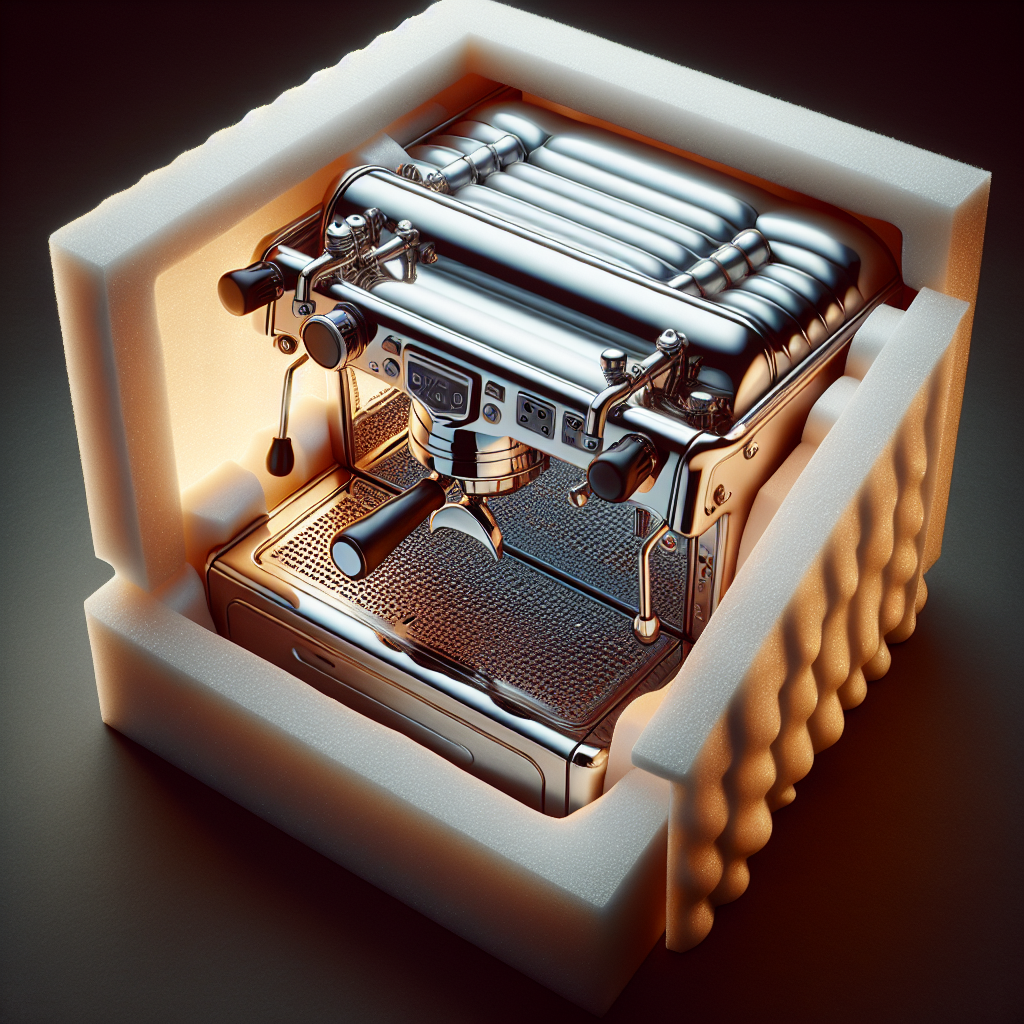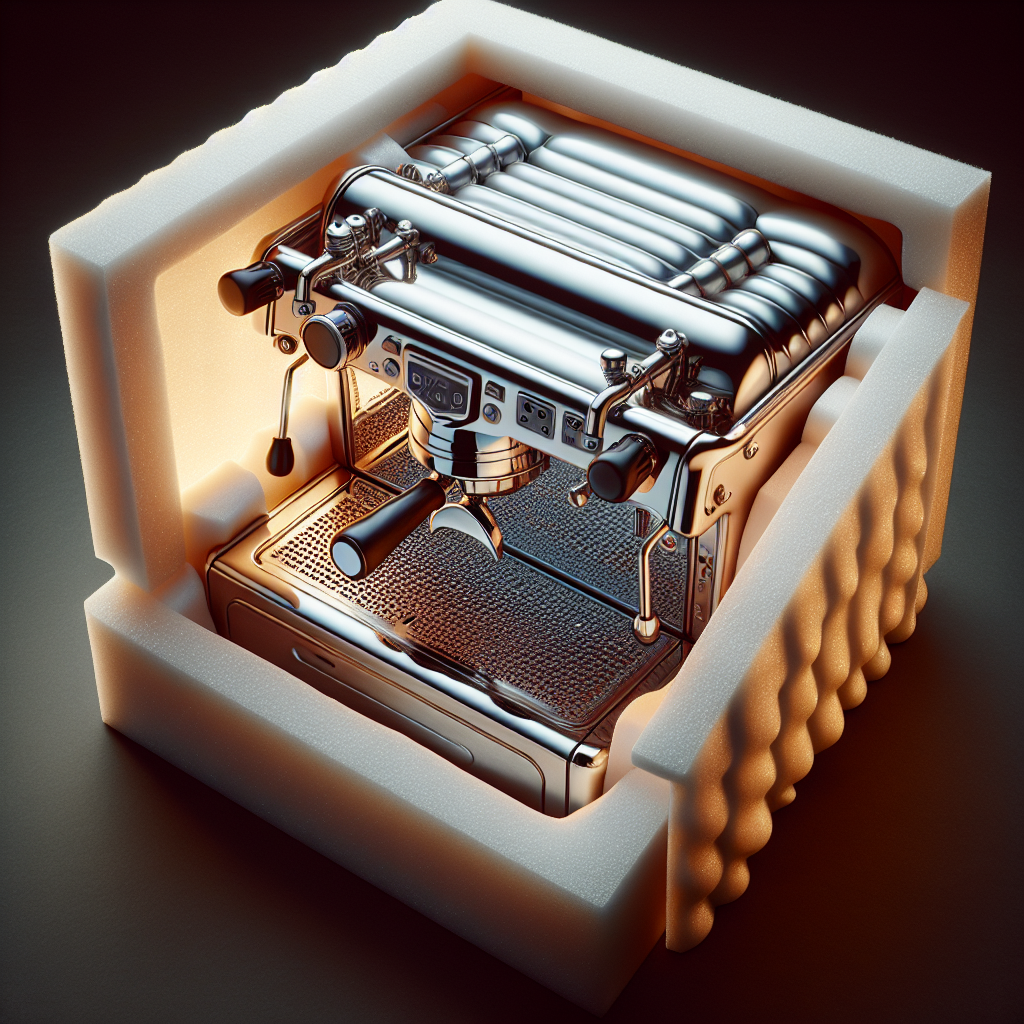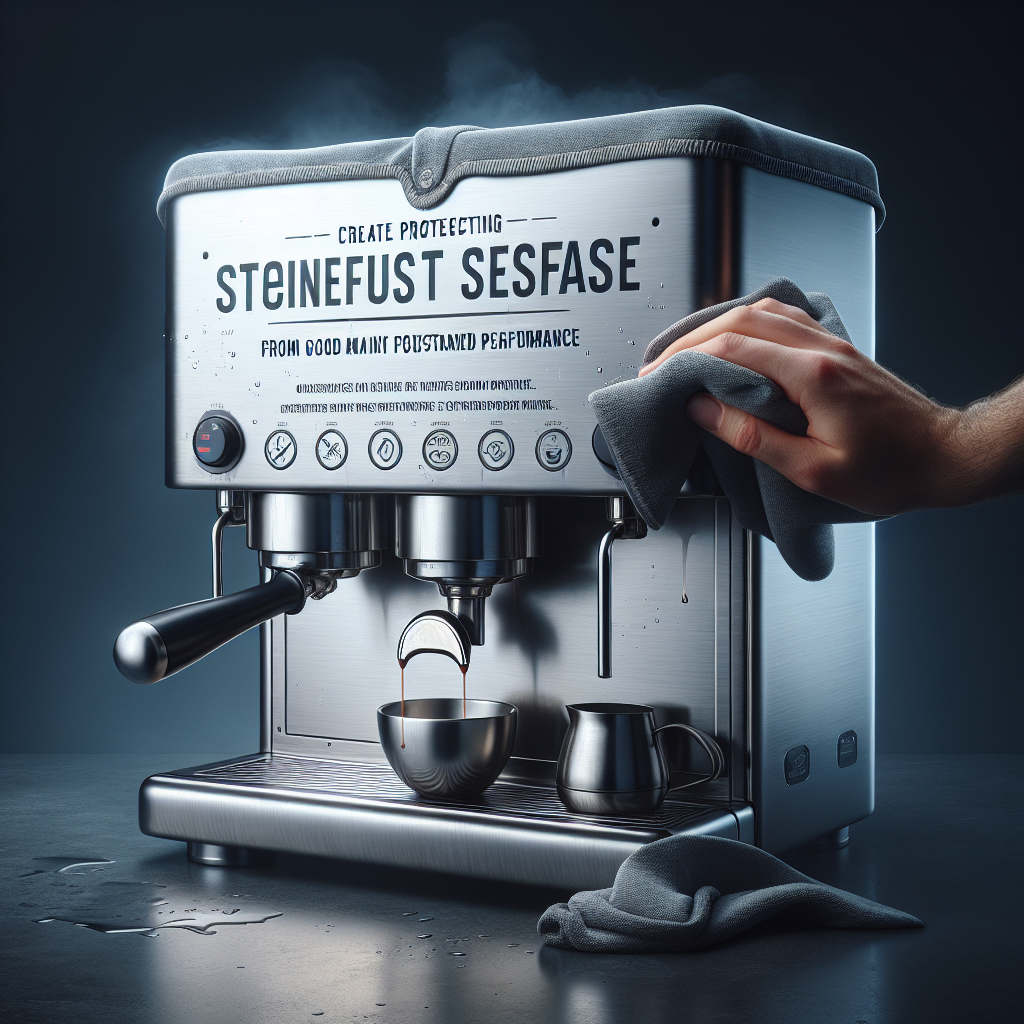
So, you’ve invested in a shiny new stainless steel espresso machine, but now you’re wondering how to take good care of it when you’re not brewing your favorite cup of joe. Well, fret not! In this article, we’re going to explore the best practices for properly storing your stainless steel espresso machine when it’s not in use. From cleaning and drying to protecting it from dust and maintaining its functionality, we’ve got you covered. So, grab a cup of coffee, sit back, and let’s dive into the world of proper espresso machine storage!

Cleaning the Espresso Machine
Remove any leftover water
Before storing your espresso machine, it’s important to remove any leftover water that may be present. Leftover water can lead to bacterial growth and damage the internal components of the machine. To remove the water, simply drain the water reservoir and ensure there is no water remaining in the drip tray or portafilter.
Clean the drip tray and portafilter
Next, it’s essential to clean the drip tray and portafilter thoroughly. These parts of the espresso machine often accumulate residue and coffee grounds, which can affect the flavor of your next brew. Use a mild detergent and warm water to clean these components, ensuring you remove all traces of residue.
Flush the machine with water
To ensure a clean and fresh start for your next use, it’s recommended to flush the machine with water. This process helps to remove any remaining residue or detergent from the internal tubing and brewing mechanism. Simply fill the water reservoir with clean water and run the machine through a cycle without any coffee grounds.
Drying the Espresso Machine
Wipe the exterior surfaces dry
After cleaning, it’s important to dry the exterior surfaces of the espresso machine thoroughly. Use a clean, dry cloth to wipe down all visible surfaces, including the casing, buttons, and steam wand. Drying the exterior helps to prevent the buildup of water spots and keeps your machine looking shiny and clean.
Open the steam wand to dry
To ensure proper drying of the steam wand, it’s recommended to open it fully. This allows any residual moisture inside the wand to evaporate completely. Leaving the steam wand open also helps to prevent the growth of bacteria and mold in this area, ensuring hygienic use in the future.
Leave the machine to air dry
Finally, it’s crucial to allow the espresso machine to air dry before storing it. This step ensures that any remaining moisture inside the machine evaporates completely, preventing the growth of mold or other contaminants. Place the machine in a well-ventilated area and allow it to air dry naturally for a few hours.
Detaching and Storing Accessories
Remove the portafilter
One essential accessory of an espresso machine is the portafilter. Before storing the machine, it’s recommended to remove the portafilter. This not only allows better airflow within the machine but also prevents any leftover coffee grounds from causing damage or affecting the taste of future brews.
Store the portafilter separately
To avoid any accidental damage or misplacement, it’s best to store the portafilter separately. Find a dedicated storage spot for the portafilter, such as a designated drawer or shelf. Ensure the portafilter is clean and completely dry before storing it to prevent any mold or bacteria growth.
Take out the water reservoir
Another removable accessory of an espresso machine is the water reservoir. Before storing the machine, it’s essential to take out the water reservoir. Empty any remaining water and clean it thoroughly. Store the water reservoir separately and ensure it is completely dry to avoid any moisture-related issues.
Protecting the Machine from Dust and Debris
Cover the machine with a dust cover
To protect your espresso machine from dust and debris, consider using a dust cover. A dust cover helps to keep the machine clean and prevent dust or dirt from entering the internal components. Ensure you choose a cover that properly fits your machine and covers it completely.
Use a cloth to cover the portafilter
In addition to the dust cover, it’s a good practice to cover the portafilter with a clean cloth. This extra layer of protection helps to prevent dust or other particles from entering the portafilter and potentially contaminating your future brews. Remember to use a clean cloth and replace it regularly for optimal hygiene.
Store in a clean and dry area
When it comes to storing your espresso machine, it’s crucial to choose a clean and dry area. Avoid areas with high humidity or potential water leaks, as moisture can cause damage to the machine over time. Find a dedicated spot for your machine on a clean countertop or a shelf away from any potential hazards.

Avoiding Exposure to Heat and Sunlight
Keep the machine away from direct sunlight
Exposing your espresso machine to direct sunlight can have adverse effects on its performance and appearance. UV rays can cause paint to fade, plastic components to discolor, and can even affect the taste of the coffee. Thus, it’s essential to store your machine in a location away from direct sunlight.
Store in a temperature-controlled environment
Temperature fluctuations can also affect the performance and longevity of your espresso machine. It’s advisable to store the machine in a temperature-controlled environment, preferably at room temperature. Extreme hot or cold temperatures can damage the internal components and the overall functionality of the machine.
Avoid placing near heat sources
When choosing a storage spot for your espresso machine, avoid placing it near heat sources such as stoves, ovens, or radiators. Exposure to excessive heat can damage sensitive internal components and affect the overall performance of the machine. Find a location away from direct heat sources to ensure the longevity of your machine.
Preventing Rust and Corrosion
Apply a thin layer of food-grade lubricant
To prevent rust and corrosion, you can apply a thin layer of food-grade lubricant on stainless steel parts. This helps create a protective barrier against moisture and humidity, reducing the chances of rust formation. Be sure to use a lubricant specifically designed for food-grade applications and follow the manufacturer’s instructions.
Wrap stainless steel parts in a cloth
Another way to prevent rust and corrosion on stainless steel parts is to wrap them in a cloth. This extra layer of protection helps to shield the metal from moisture and exposure to the environment. It’s crucial to use a clean and dry cloth, and regularly inspect for any signs of rust formation.
Regularly inspect for any signs of rust
Even with preventive measures, it’s essential to regularly inspect your espresso machine for any signs of rust formation. Check all stainless steel parts, including the casing, portafilter, and steam wand, for any discoloration or rust spots. If you notice any signs, take immediate action to prevent further damage and address the issue promptly.
Maintaining the Espresso Machine
Perform regular maintenance checks
To keep your espresso machine in optimal condition, it’s important to perform regular maintenance checks. This includes inspecting all components for wear and tear, cleaning internal parts as needed, and addressing any functional issues promptly. Following the manufacturer’s guidelines for maintenance will help ensure the machine’s longevity.
Descale the machine when necessary
Over time, mineral deposits can build up inside the espresso machine, affecting its performance and taste. Descaling is the process of removing these deposits and should be done periodically. Follow the manufacturer’s instructions on how to descale your specific machine and use a descaling solution specifically designed for espresso machines.
Follow manufacturer’s instructions
When it comes to maintaining your espresso machine, it’s crucial to follow the manufacturer’s instructions. Each machine may have specific requirements and guidelines for cleaning, maintenance, and troubleshooting. By adhering to these instructions, you can ensure that your machine functions optimally and lasts for years to come.
Checking for Pest Infestation
Inspect for any signs of pests
Pests can be a common issue in kitchens, and your espresso machine is no exception. Regularly inspect your machine for any signs of pest infestation, such as droppings or gnaw marks. If you notice any signs, take immediate action to address the issue and prevent any contamination of your coffee.
Use pest deterrents if necessary
If you live in an area prone to pests, it may be necessary to use pest deterrents around your espresso machine. This can include traps, sprays, or natural remedies that are safe for use in a kitchen environment. Always follow the instructions provided with the deterrents and keep them away from the machine to avoid any contact or contamination.
Clean thoroughly if infested
If you discover a pest infestation in your espresso machine, it’s crucial to clean it thoroughly to remove any traces of pests or contamination. Disassemble the machine as much as possible and clean all parts with hot, soapy water. Pay extra attention to crevices and hard-to-reach areas where pests may hide. Once cleaned, ensure the machine is completely dry before reassembling and storing.
Ensuring Proper Ventilation
Leave space around the machine for airflow
Proper ventilation is essential for maintaining the optimal performance of your espresso machine. When storing the machine, make sure to leave enough space around it to allow for adequate airflow. Blocking vents or keeping the machine in an enclosed space can lead to overheating and other issues.
Keep vents and openings clear
In addition to leaving space around the machine, it’s important to keep the vents and openings clear of any obstructions. Regularly inspect the machine to ensure that no dust or debris has accumulated in these areas. Use a soft brush or compressed air to remove any particles, ensuring that the airflow remains unrestricted.
Avoid storing in enclosed spaces
To ensure proper ventilation, it’s essential to avoid storing the espresso machine in enclosed spaces such as cabinets or closets. Lack of airflow can cause moisture build-up, leading to the growth of mold or mildew. Choose an open and well-ventilated area for storing your machine to keep it in optimal condition.
Reassembling and Testing Before Use
Reattach accessories and components
Before using your stored espresso machine again, make sure to reattach all accessories and components that were removed during the storage process. Ensure that each part is properly secured and tightened to prevent any leaks or malfunctions during operation.
Prime the machine before making coffee
Priming the espresso machine is an important step before making coffee, especially after a period of storage. Priming involves running water through the machine to remove any air pockets and ensure smooth operation. Follow the manufacturer’s instructions on how to prime your specific machine and discard the priming water before making your first brew.
Run a cleaning cycle and test
To ensure that your stored espresso machine is ready for use, it’s recommended to run a cleaning cycle and perform a test. Run water through the machine to flush out any remaining cleaning solution or debris. Once the water runs clear, test the machine by brewing a small sample of coffee. This allows you to check if the machine is functioning correctly and if any adjustments are needed before regular use.
By following these guidelines for cleaning, storing, and maintaining your stainless steel espresso machine, you can ensure it stays in optimal condition. Proper care and storage will not only extend the lifespan of your machine but also ensure that you continue to enjoy delicious cups of coffee for years to come.